The allure of a well-kept garden or a neatly trimmed lawn is undeniable. Landscaping is not just about beautifying your space; it’s about creating an ecosystem that supports local flora and fauna while providing a serene environment for you and your family. A clean and well-maintained landscape can transform your outdoor area into a sanctuary and significantly boost your property’s curb appeal. In this guide, we’ll cover the essential steps to clean up your landscaping, ensuring it’s both beautiful and sustainable.
What Tools Do I Need For Landscaping Cleanup?

For landscaping cleanup, there are a few essential tools you’ll need to get the job done effectively. First and foremost, a sturdy pair of gloves is crucial for protecting your hands while handling debris and sharp objects. A rake will be useful for gathering leaves, twigs, and other loose debris, while a leaf blower can help clear larger areas quickly.
How Often Should I Clean Up My Landscaping?
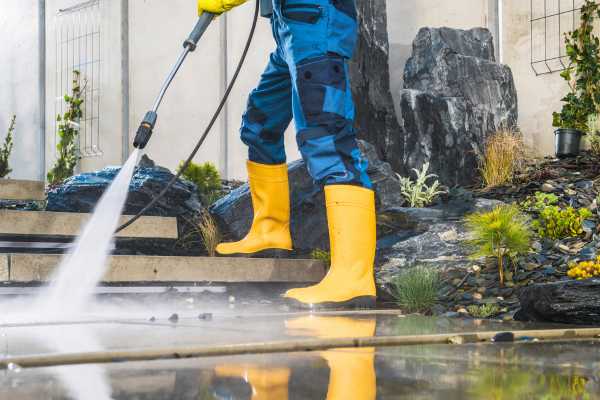
The frequency of landscaping cleanup depends on various factors such as the size of your yard, the type of plants and trees you have, and the local climate. In general, it’s recommended to clean up your landscaping at least once a season to remove debris, dead leaves, and overgrown vegetation. This helps maintain the health and appearance of your outdoor space.
Can I Compost The Yard Waste From Landscaping Cleanup?
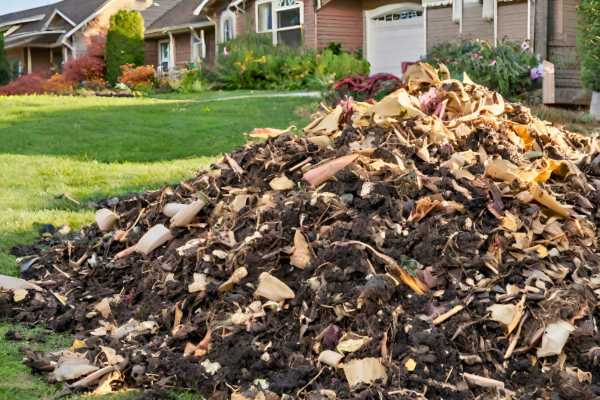
Yes, you can compost the yard waste from landscaping cleanup. Yard waste such as grass clippings, leaves, small branches, and other organic materials make excellent compost material. By composting these materials, you can create nutrient-rich soil amendments that can be used to improve the quality of your garden soil.
Removing Debris and Weeds

The first step in cleaning up your landscaping is to remove any debris and weeds that have accumulated. This process not only enhances the appearance of your garden but also prevents pests and diseases. Start by gathering fallen branches, leaves, and other debris. Then, focus on weeding, which is crucial for preventing unwanted plants from competing with your garden for nutrients and sunlight. Regular weeding keeps your garden healthy and allows your plants to flourish without competition.
Pruning and Trimming Care
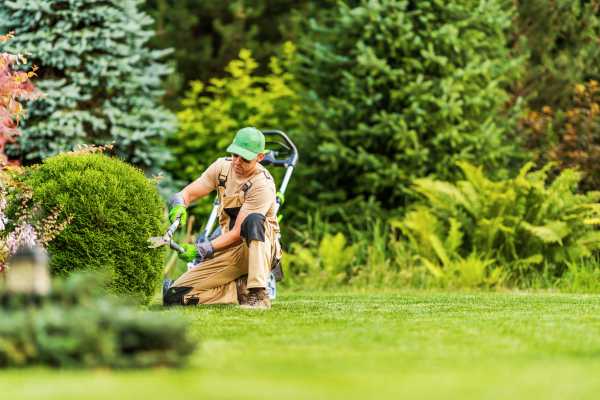
Pruning and trimming are essential for maintaining the health and aesthetic of your landscaping. Prune dead or diseased branches from trees and shrubs to encourage healthy growth and improve air circulation. Trim hedges and bushes to maintain their shape and size. This not only makes your garden look tidy but also promotes new growth, ensuring your plants are vibrant and robust.
Assessing Mulching and Edging

Mulching and edging are vital components of a well-maintained landscape. Mulch helps retain soil moisture, suppress weeds, and enhance soil quality. Assess your garden beds and apply a fresh layer of mulch as needed. Additionally, edging defines the boundaries of your garden beds, giving your landscape a clean, polished look. It also prevents grass from encroaching on your plant beds.
Organizing Garden Tools and Spaces

Organizing garden tools and spaces is essential for maintaining a functional and visually appealing outdoor area. One way to achieve this is by implementing a dedicated storage system for all gardening tools, ensuring easy access and preventing clutter. Utilizing vertical storage options such as pegboards or wall-mounted racks can free up valuable floor space while keeping items neatly organized.
Fertilizing Your Lawn
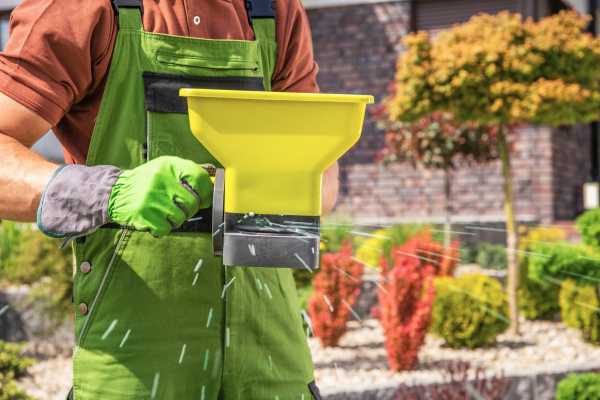
Fertilizing your lawn is a crucial step in maintaining a lush and healthy outdoor environment. While many homeowners focus on mowing and watering, proper fertilization often gets overlooked. It’s important to understand that not all lawns require the same type of fertilizer, as the needs vary depending on factors such as climate, soil composition, and grass type. By conducting a soil test, you can determine the specific nutrient requirements of your lawn and choose the most suitable fertilizer blend. Additionally, consider the season when fertilizing your lawn – spring and fall are key times to promote strong root growth and overall health.
Natural and Chemical Control Methods

Effective landscaping involves managing pests and diseases. Use a combination of natural and chemical control methods as needed. Natural methods include encouraging beneficial insects and using organic sprays. When chemical controls are necessary, use them responsibly, following all guidelines for safe application. This balance is crucial for maintaining a healthy ecosystem in your garden.
Irrigation and Water Management

Proper irrigation and water management are key to a healthy landscape. Over or under-watering can lead to problems such as root rot or drought stress. Install an efficient irrigation system, such as drip irrigation, to provide a steady supply of water. Consider the specific water needs of your plants, and adjust your watering schedule based on the season and weather conditions.
Pest and Disease Control

Pests and diseases can quickly compromise the health of your landscape. Regularly inspect your plants for signs of trouble and take prompt action to address any issues. Use environmentally friendly pest control methods where possible, and apply fungicides or insecticides as needed, always following safety instructions and environmental guidelines.
Revitalizing Plant Beds
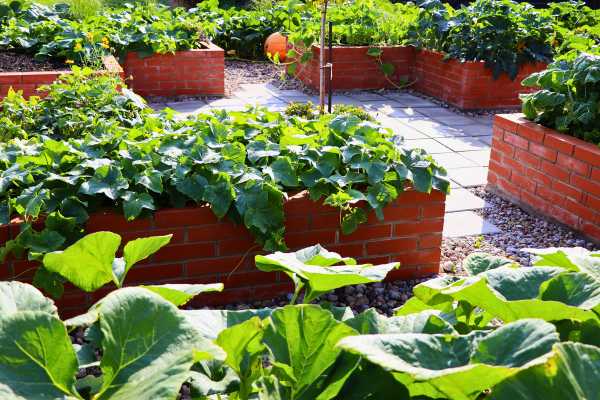
To revitalize plant beds, a crucial step is to clean the landscaping bricks that frame them. This not only enhances the visual appeal but also helps in maintaining the overall health of the plants. Begin by removing any debris or weeds between the bricks using a stiff brush or power washer. Next, mix a solution of water and vinegar and scrub the bricks thoroughly to remove any accumulated dirt or grime. Rinse with water and let dry before replacing the plants.
Eco-Friendly Landscaping Practices

Eco-friendly landscaping practices are becoming increasingly popular as people become more aware of the environmental impact of traditional gardening and lawn maintenance. One of the most crucial aspects of eco-friendly landscaping is minimizing water usage through the implementation of drought-resistant plants and efficient irrigation systems. Additionally, using natural mulch and compost instead of chemical fertilizers can improve soil health and reduce reliance on synthetic products that harm the environment.
The Final Thought
Maintaining clean and well-kept landscaping not only enhances the aesthetic appeal of your property but also contributes to a healthier environment. By regularly cleaning up debris, trimming overgrown vegetation, and removing weeds, you can create a more inviting outdoor space for yourself and others to enjoy. Additionally, proper landscaping maintenance can help prevent soil erosion and water pollution. Remember that regular upkeep is key to preserving the beauty and functionality of your outdoor living area. Take the time to invest in the cleanliness of your landscaping today for a more beautiful and sustainable tomorrow.
